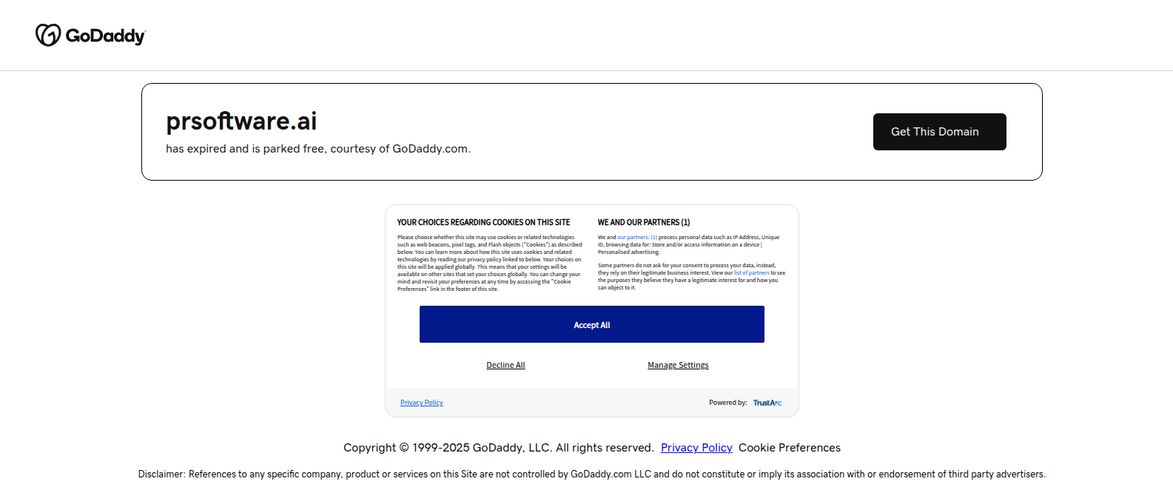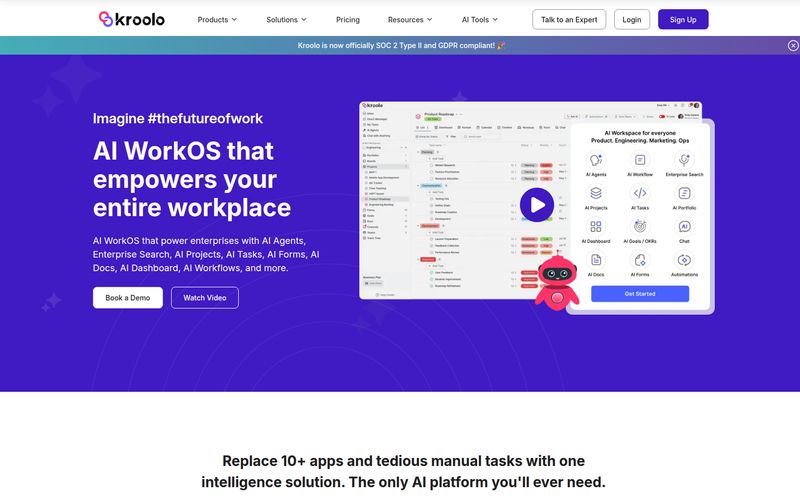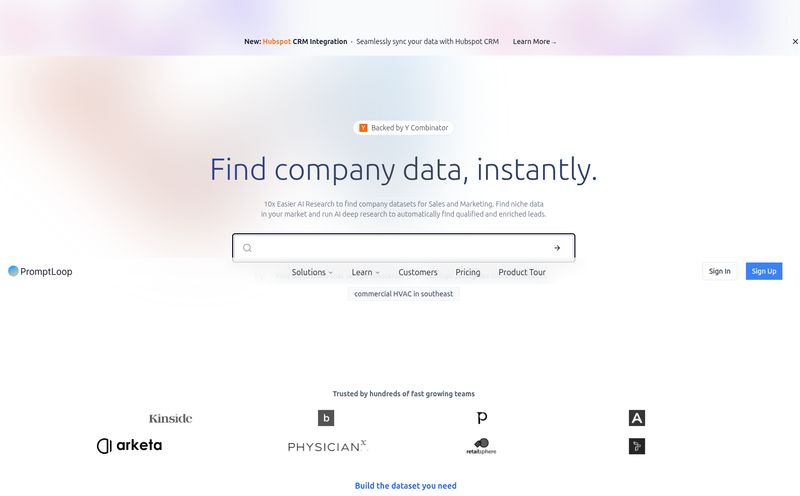Influencer marketing can feel a lot like online dating. You spend hours swiping through profiles, trying to find “the one.” You send a hopeful message, maybe you get a reply, maybe you get ghosted. When you finally connect, you’re never quite sure if their dazzling follower count is the real deal or if it’s all just smoke, mirrors, and bots. I’ve been there. I've run campaigns where the influencer we picked looked perfect on paper but delivered all the engagement of a dial-up modem. It’s a grind.
For years, we've been told the only way to do it right is to manually sift through hashtags, spy on competitors' mentions, and slide into DMs with a prayer. But what if there was a better way? What if a machine could play matchmaker for you, saving you the heartache and the endless scrolling? That’s the big, bold promise of a platform I’ve been looking at called Chirpley.
What Exactly is Chirpley, Anyway?
At its core, Chirpley is an AI-powered influencer marketplace. But that’s a bit of a dry description for what it’s trying to do. Think of it less as a stuffy marketplace and more like a high-tech headhunter for your brand. Its entire world revolves around one specific, and often overlooked, group: nano and micro-influencers.
These aren’t your mega-celebrities with millions of followers. We’re talking about creators with a few thousand, maybe up to 50,000, highly-engaged followers who hang on their every word. They are the local food bloggers everyone in the neighborhood trusts, the niche hobbyists who are the undisputed experts in their small-but-mighty communities.
Chirpley creates a peer-to-peer system where brands can connect directly with these smaller creators. The platform’s brain is an AI engine designed to automate the entire process, from finding the perfect match to running the campaign. It’s aiming to be an all-in-one solution, a single dashboard to rule them all.
The Magic Under the Hood: AI Matchmaking and Automation
The term “AI” gets thrown around so much these days it’s almost lost its meaning. So what does it actually do here? Chirpley’s whole pitch is built on its AI matchmaking. You, the marketer, input your campaign goals, target audience, budget, and brand values. The AI then crunches the data on its roster of influencers—analyzing their audience demographics, engagement rates, content style, and past performance—to serve up a list of perfect partners.
They call it a “1-click marketing bomb,” which is… a bit of marketing hyperbole, but I get the sentiment. The goal is to eliminate the guesswork. No more betting on an influencer just because their aesthetic feels right. This is about data-driven decisions. The platform claims its AI can pair marketers and influencers with a level of perfection that’s just not humanly possible. A bold claim, for sure, but an exciting one.

Visit Chirpley
Beyond the initial match, the automation continues. It handles workflows, campaign tracking, and optimization, constantly refining things to improve performance. For a small team or a solo marketing manager, the idea of offloading that much administrative work is pretty darn appealing.
Why You Should Bet on the Little Guys: The Power of Nano & Micro Influencers
For a while, the industry was obsessed with follower counts. Bigger was always better. But we've learned a lot since then. As an SEO guy, I live and breathe engagement metrics, and I can tell you that authenticity is the new currency. And that’s where nano and micro influencers truly shine.
A 2019 study I often refer back to from Collective Bias showed that micro-influencers drive significantly more purchasing conversations than their celebrity counterparts. Why? Trust. Their recommendations feel less like a slick advertisement and more like a genuine tip from a friend. They have a real, conversational relationship with their audience.
The problem has always been scale. Finding and managing ten micro-influencers is ten times the work of managing one macro-influencer. That’s the specific pain point Chirpley is built to solve. It makes a micro-influencer strategy, which arguably has a better ROI, actually feasible without hiring a dedicated team just to manage it.
The Good, The Bad, and The Algorithmic
No tool is perfect. As much as I get excited by new tech, I've been in this game long enough to know you have to look at it from all angles. So, let’s get into the nitty-gritty.
The Bright Side: What I Like About Chirpley
The biggest win here is the sheer amount of time and effort saved. The discovery phase of influencer marketing is a notorious time-sink. Automating that is a massive value proposition. It lets you focus on strategy and creative, not on endless spreadsheet management. I also love the focus on the little guys. It gives smaller brands with modest budgets a realistic shot at effective influencer marketing, and it provides a platform for passionate, smaller creators to monetize their work. Having it all in one place—discovery, management, analytics—is also a huge plus. Juggling multiple tools is one of my biggest pet peeves.
A Healthy Dose of Skepticism
Now, for the other side of the coin. My main hesitation is the reliance on the AI. An algorithm is only as good as the data it’s trained on and the logic it follows. What if the AI has a hidden bias toward certain types of influencers? What if its definition of a “good match” misses some of the human nuance that makes a collaboration truly special? You’re putting a lot of faith in a black box. You have to wonder if it can truly grasp a brand's unique voice or if it just matches keywords. There's a real risk of losing that human oversight, and the effectiveness of your entire campaign hinges on how smart their algorithm really is. It's a calculated risk, no doubt about it.
What's the Price Tag? The Chirpley Pricing Question
And now for the question on everyone’s mind: how much does it cost? Well, here’s the thing… Chirpley doesn’t list its pricing publicly on its website. Cue the dramatic music.
Before you get frustrated, this is actually pretty common for specialized B2B and SaaS platforms. It usually means the pricing is customized based on your needs—the number of campaigns you plan to run, the scale of your outreach, the features you need, etc. It’s not a one-size-fits-all product. The best way to find out is to head over to their site and request a demo or get in touch with their team directly. It’s an extra step, but it probably ensures you’re not paying for features you'll never use.
So, Is Chirpley Worth Your Time and Budget?
In my opinion, Chirpley is a fascinating and potentially powerful tool for a specific type of marketer. If you’re a startup, a small-to-medium-sized business, or an agency that wants to tap into the high-ROI world of micro-influencers without the massive time investment, this could be a game-changer. It’s for the brand that values data and efficiency and is ready to embrace an automated approach.
Who should probably pass? If you’re a massive corporation that works exclusively with A-list celebrities and has an in-house team of 20 people managing those relationships, this isn’t for you. Likewise, if you’re a marketing purist who insists on 100% manual control and believes instinct trumps data every time, you might find the AI-driven approach a little unsettling. But for the rest of us, who are just trying to get great results without working 80-hour weeks, Chirpley is definetly worth a look.
Your Chirpley Questions, Answered
1. What exactly is a nano-influencer?
A nano-influencer is generally considered someone with between 1,000 and 10,000 followers on a social media platform. They are known for having a very high level of engagement and a strong, trust-based relationship with their niche audience.
2. How does the AI matching actually work?
While the exact algorithm is proprietary, it works by analyzing dozens of data points. A brand provides its campaign details (target audience, goals, brand voice), and the AI scans its database of influencers, matching those details against influencer performance metrics, content style, and audience demographics to find the most suitable partners.
3. Can I still manually approve influencers?
Yes. While the system is automated, marketers still retain control. The AI proposes a list of ideal candidates, but the final decision on which influencers to partner with still rests with you. It's more of an AI-assisted process than a fully autonomous one.
4. What’s the deal with blockchain in Chirpley?
This is one of the more tech-forward aspects. Chirpley incorporates blockchain technology to streamline payments and increase transparency. This can mean faster, more secure payouts for influencers and a clearer, more auditable transaction record for brands, which helps build trust in the ecosystem.
5. Is Chirpley only for B2C brands?
Not necessarily. While it's a natural fit for B2C companies in sectors like fashion, beauty, food, and tech, it can also be effective for B2B brands. There are many micro-influencers in niche B2B spaces (like SaaS, marketing, or finance) who have dedicated professional followings. It all comes down to finding the right creator for your audience.
The Final Word on Chirpley
Chirpley is a swing for the fences. It's trying to solve a real, nagging problem in the marketing world with some seriously modern tech. The shift toward smaller, more authentic creators is a trend I've been watching for years, and a platform dedicated to empowering that movement is a welcome sight. While I maintain a healthy skepticism about any tool that claims to have all the answers, Chirpley’s approach is smart, focused, and aligned with where the industry is heading. If you're ready to stop swiping and start making data-backed connections, it might just be the perfect match.



